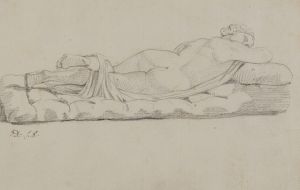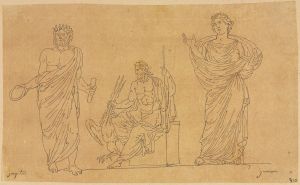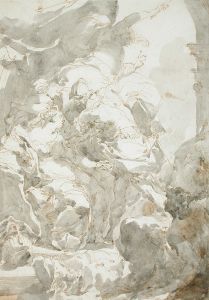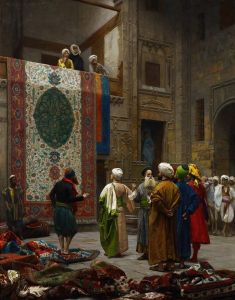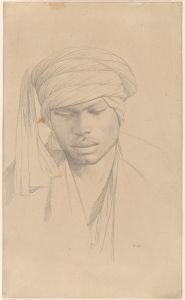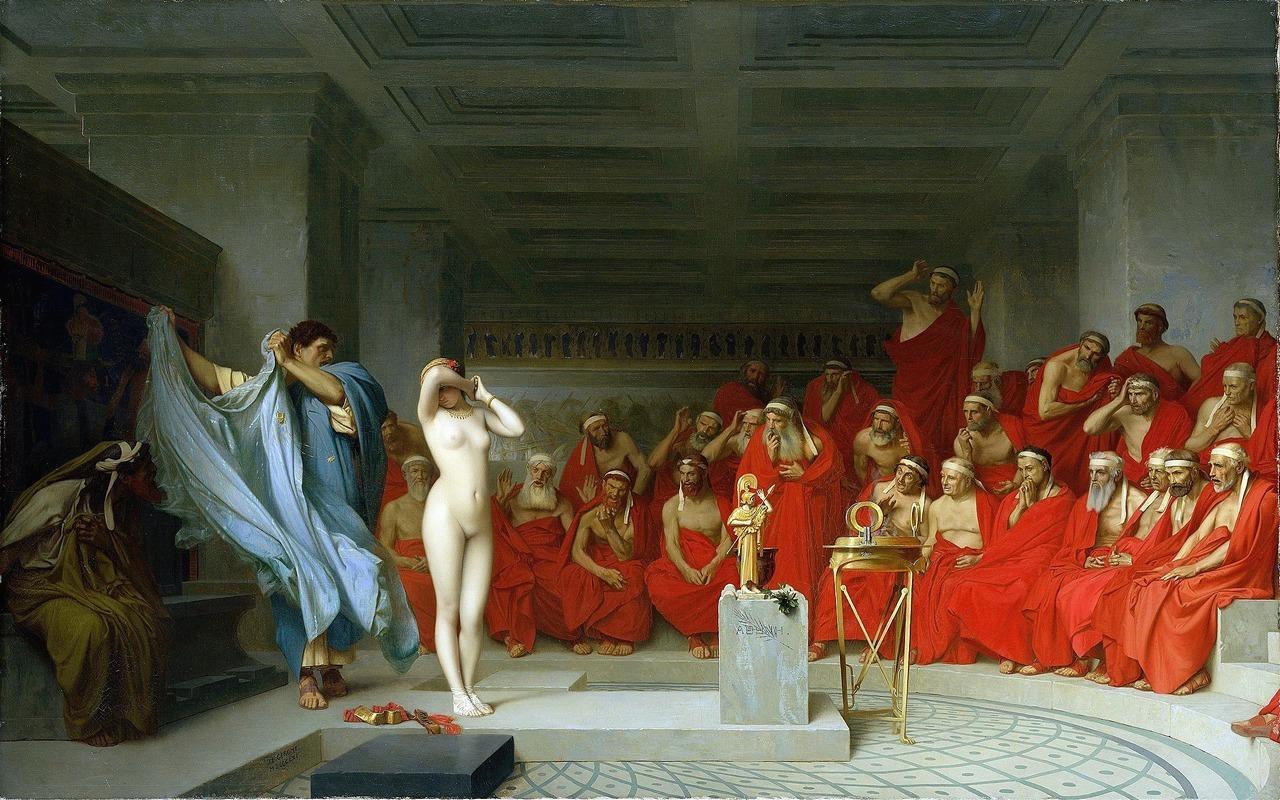
Phryne revealed before the Areopagus
A hand-painted replica of Jean-Léon Gérôme’s masterpiece Phryne revealed before the Areopagus, meticulously crafted by professional artists to capture the true essence of the original. Each piece is created with museum-quality canvas and rare mineral pigments, carefully painted by experienced artists with delicate brushstrokes and rich, layered colors to perfectly recreate the texture of the original artwork. Unlike machine-printed reproductions, this hand-painted version brings the painting to life, infused with the artist’s emotions and skill in every stroke. Whether for personal collection or home decoration, it instantly elevates the artistic atmosphere of any space.
"Phryne Revealed Before the Areopagus" is a notable painting by the French artist Jean-Léon Gérôme, completed in 1861. Gérôme was a prominent figure in the 19th-century academic art movement, known for his meticulous attention to detail and historical themes. This painting is a striking example of his work, capturing a dramatic moment from ancient Greek history.
The painting depicts the legendary story of Phryne, a famous courtesan of ancient Greece, who was put on trial for impiety. The Areopagus was the high court of appeal for criminal and civil cases in Athens, and it is in this setting that the scene unfolds. According to historical accounts, Phryne was accused of profaning the Eleusinian Mysteries, a set of secret religious rites held annually. Her trial was a sensational event, drawing significant public attention.
In Gérôme's painting, Phryne stands before the judges of the Areopagus. The focal point of the artwork is the dramatic moment when her defender, the orator Hypereides, reveals her naked body to the judges. This act was intended to evoke pity and admiration, appealing to the judges' sense of beauty and divine favor. The legend suggests that Phryne's extraordinary beauty swayed the judges, leading to her acquittal.
Gérôme's composition is carefully constructed to emphasize the tension and drama of the scene. Phryne is depicted in the center, her body illuminated by light, contrasting with the darker, more subdued tones of the surrounding figures. The judges are shown in various states of surprise and contemplation, their expressions capturing the mix of emotions elicited by the unexpected revelation.
The painting is notable for its classical realism, a hallmark of Gérôme's style. His attention to detail is evident in the rendering of textures, from the smoothness of Phryne's skin to the intricate folds of the judges' robes. Gérôme's use of light and shadow enhances the three-dimensionality of the figures, creating a lifelike representation that draws viewers into the historical narrative.
"Phryne Revealed Before the Areopagus" reflects Gérôme's interest in historical and mythological subjects, as well as his skill in capturing human emotion and drama. The painting is housed in the Kunsthalle Hamburg, a major art museum in Germany, where it continues to be a subject of interest for art historians and enthusiasts alike.
The story of Phryne and her trial has been a source of fascination for centuries, symbolizing themes of beauty, justice, and the power of persuasion. Gérôme's interpretation of this tale not only showcases his artistic prowess but also invites viewers to reflect on the enduring impact of classical antiquity on art and culture.





